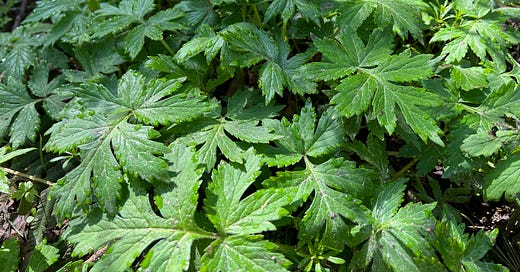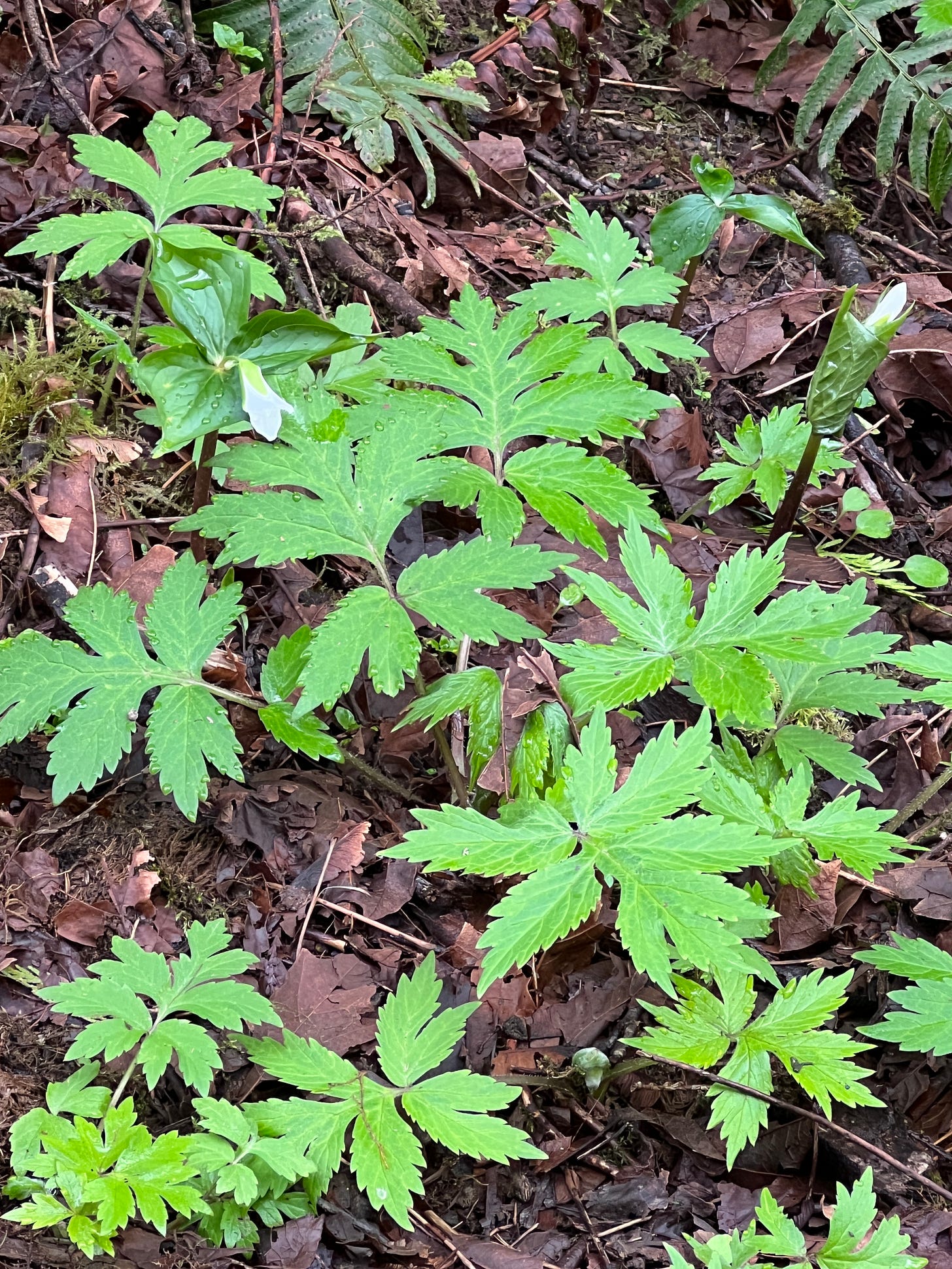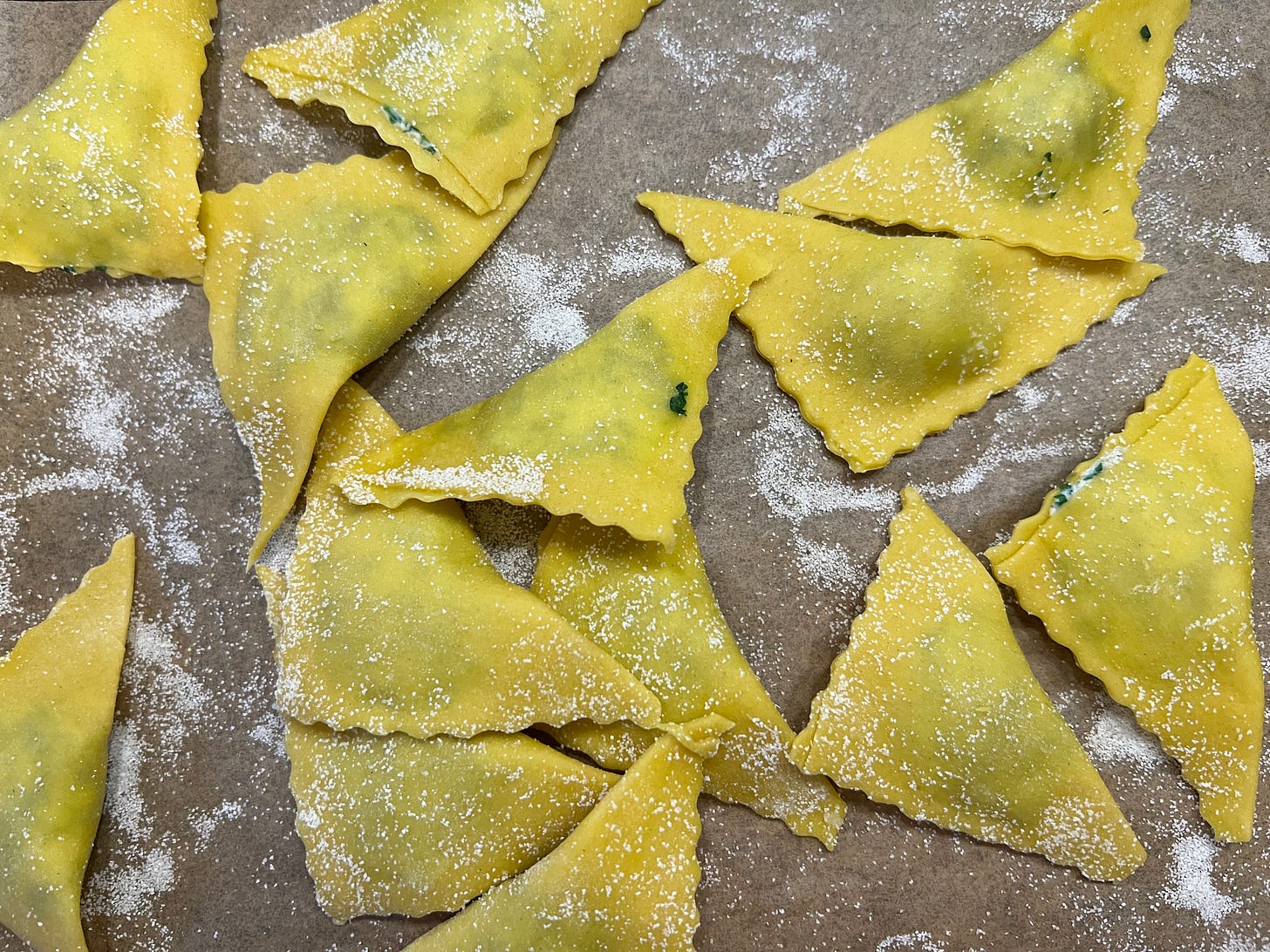In my quest to eat my neighborhood, petal by petal, fruit by fruit, the weeds have shown the greatest ability to catalyze a shift in how I perceive the landscape. After making my front-lawn dandelion salad last year, for example, the yellow flowers that are now erupting across Portland's yards and parking strips no longer set off an urge to grab a (phantom) digger.
I can't tell if this alchemical process is essentially alpha-male chest thumping—I have eaten my enemy and survived—or if eating weeds has created a more intimate connection with them, a knowing that goes beyond recognizing their shapes or remembering their names.
Two weekends ago, I felt the same catalytic process take hold during the class I took with local wild-food expert John Kallas (Wild Food Adventures), who helped us identify spring wild foods in Forest Park. For those of you outside Portland, Forest Park is one of the largest urban parks in the country, with more than 70 miles of trails weaving up and down the maple- and evergreen-covered hills. Over the course of the morning, we dodged joggers and the tips of stinging nettles as John taught us how to see, and eat, the park. (Heads up, for those of you who know Wild Food Adventures: Volume 2 of John’s Edible Wild Foods guides comes out this month.)
I have resisted foraging in the parks near my home for several reasons. The obvious one: You never know who/what peed where. But there are other concerns specific to writing about foraging: As a woman I recently met told me, when you gather wild foods you're assuming responsibility for the people who eat them. There are plenty of experts who have written plenty of books and articles about foraging. I am not one of them. Just ask my husband, who is a little leery of some of things I bring into the house to cook.
I wasn't even sure that I was going to eat any of the spring greens and fiddleheads John pointed out in Forest Park. But the Pacific waterleaf lining the trails spoke to me of the ephemerality of spring.
Over the next few weeks, rising temperatures will make most of the choice spring weeds and wild plants sprouting up in Portland's lawns and parks turn fibrous and bitter. Spring evolves so quickly that every week there's something new that must be picked at its most tender and fragrant. Nature's tight deadlines have been pressing up against my own work deadlines, and I've already missed cherry blossoms and magnolia buds for 2023. I wanted to catch at least a few spring greens at their peak.
On a sunny, cool day that genuinely felt like the first day of our long-delayed spring, my friend Loree returned with me to a different section of Forest Park to gather Pacific waterleaf. This wasn’t any kind of bulk foraging — more like enhanced grazing.
With its large celery-like leaves, covered in the finest fuzz, and its occasional white spots, Pacific waterleaf was easy to safely identify. That morning the leaves were still outlined in pearls of dew that resembled silver nonpareils. We'd walk a few steps, bend down to pluck a few leaves from each big patch, stick them in our plastic bag, and move along. On two-mile route we passed thickets of smooth-leaf yellow violets and Siberian miner's lettuce, both edible, as well as hundreds of inedible trilliums, the tripartite white blooms that Northwesterners treat like the Von Trapps did edelweiss: with a proprietary, yearning delight.
In a few weeks, the Pacific waterleaf leaves we left behind may stiffen, acquiring a two-day stubble's worth of fuzz and clutches of fuzzy blossoms. Loree and I foraged about 4 ounces of smaller leaves with the texture of brushed cotton, and I returned home to wash them more times than I could count.
Raw, the leaves tasted as pale green as they looked. They had none of the potency of stinging nettles, whose dark flavor reminds me of the chlorophyll-rich version of a bloody steak.
Filling a plastic sack with waterleaf made me think of Greek horta or Armenian jingalov hats, traditional recipes that make the most of a morning's walk along the hillside. Surviving on spring greens is an ancient, universal necessity, a promise that the killing winter is over and the summer harvest is near.
As for myself, I had wild-green triangoli in mind.
After making Sarah Grueneberg's egg-yolk pasta dough from the wonderful Listen to Your Vegetables — a few of the eggs I used even came from a friend's chickens — I blanched the waterleaf to kill off anything that rinsing hadn’t. I squeezed all the water out of the greens, chopping the emerald-colored mass finely, and stirred it together with ricotta and grated parmesan. Then, to season the pasta filling, I wandered around the house and yard: I pulled the first stalk of pink-tipped spring garlic from my garden, as well as a handful of chives. I snipped a few sprigs of the oregano that has defied our attempts to sheet-mulch over it. I harvested some of the small-leafed basil growing on Christian's aquaponics tank.
The pasta filling came together like a promise. Not the promise of spring; the promise that this larger alchemical process I've embarked on — seeding an edible meadow in my lawn, learning to forage the neighborhood, bartering with friends — is finally showing results. That cooking the neighborhood weaves it into my deeper sense of belonging to this place. That I am becoming alive to this city, and it, to me.
Of course, by the time it came to roll out the pasta, it was late, and I had forgotten how fiddly stuffed pastas can be. My vision of a bowl filled with neat triangle packets of satiny, golden dough slammed up against low blood sugar and deadline stress. My waterleaf triangoli were sloppy. Yet, tossed with melted butter and parmesan, they were delicious. No one vomited after dinner, which was a bit of a relief. I ended up with enough filling and pasta to freeze some and, even better, to give some away.









I love the photos and your humor. It reminded me when my in-laws came to visit in San Francisco and we walked to Land's End, and on the way I picked miners lettuce and ate it and they were shocked at me eating weeds. I was not so concerned then about who or what peed on it, I didn't even think about it, and I survived. In my very hot climate now, I've planted a relative of mint and with water it spreads out lovely, and has nice flowers too. I always pick the ones close to the wall, where dogs can't reach and use them for tea. I think your pasta looks delicious, and I bet it tastes like that too! Don't give up foraging, you will find some real treasures, I am sure. I am planting some zaatar and micromeria in my garden, I love tea with micromeria and zaatar I use instead of oregano in many dishes, lovely in my avocado salad. I've also discovered that the zaatar small flower head have a much more strong smell and flavor and I mix them with the leaves or dry all of them and use it later. Enjoy your foraging and keep us updated!
The pasta is perfect! Gosh, don’t look too deeply at what we serve when you come over! Ha!
Our very old saucer magnolia has not yet bloomed. If you are looking for her petals, you are welcome to them.